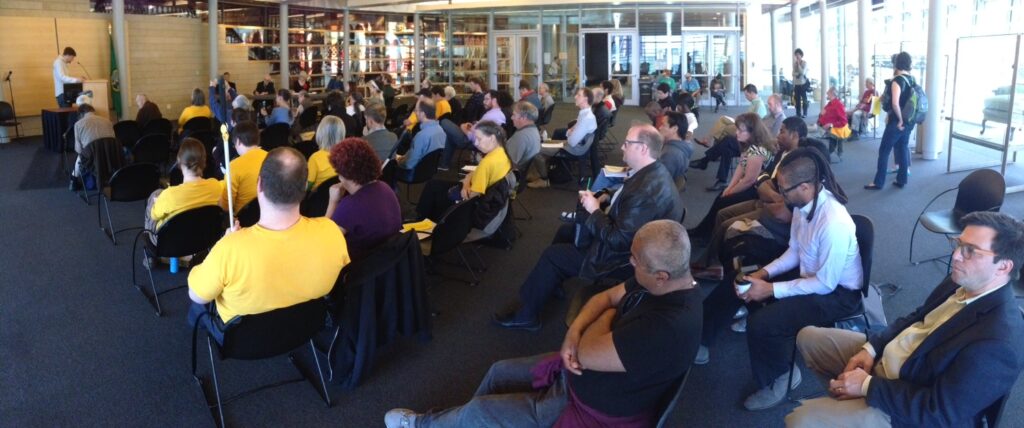June 15, 2015
Dear Sound Transit Board Members and Seattle City Councilmembers:
The Transit Riders Union strongly supports a Northgate Pedestrian/Bike Bridge over I-5. We urge you to develop a realistic finance plan for this bridge to ensure that it is designed and built in a timely manner as part of the Northgate station construction.
We also urge Sound Transit to site a station at 130th Street along the north corridor light rail extension, to improve access from Pinehurst, Lake City, Bitter Lake and other North Seattle neighborhoods using local transit connections; and to put the south Shoreline station at 155th Street with no parking garage. This will keep the station away from the I-5 interchange at 145th to minimize conflict and delay from congested traffic.














